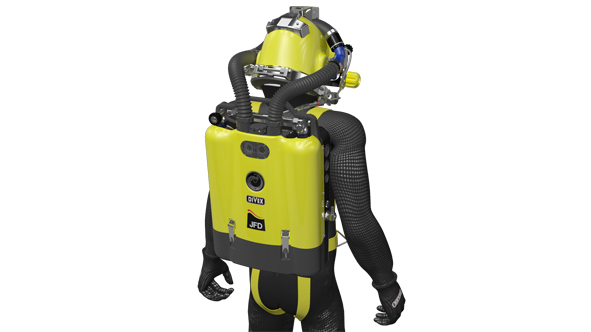
A new breathing system aims to help improve safety for commercial divers by more than doubling the supply of breathing gas, its manufacturers’ claim.
The compact bailout rebreathing apparatus (COBRA) has been developed by subsea equipment provider JFD, which was formed by the merger of James Fisher Defence and Divex in 2014.
The system significantly extends the duration of the supply of emergency breathing gas, delivering 45 minutes of emergency life support at a depth of 120 meters.
A conventional open-circuit 300 bar twinset bailout system will typically deliver seven minutes at the same depth.
The extended emergency breathing gas supply significantly improves the likelihood of a successful rescue in the event of an emergency.
The new system is operated via a single turn activation and can be tested prior to its use without affecting the functionality of the system, providing reassurance to the diver that there is a reliable and efficient life support system in place in case of an emergency, said JFD.
Giovanni Corbetta, managing director at JFD, said: “Modern diving operations bring significantly more risk, and continuing to use systems which can only provide a few minutes of emergency gas puts lives in danger.
“The COBRA system has been rigorously tested and has a proven ability to significantly extend the provision of emergency life support without impacting the operations of diver, allowing them to carry out their duties with minimal risk.”
It is widely recognised in the commercial diving industry that the same extended bailout breathing facility used as standard in operations at depths of over 200 meters sea water (msw) should be available for divers operating at 50-200 msw, a far more common operating depth.
Modern diving operations often require the use of extended excursion umbilicals from bigger diving bells, meaning that the time required to return to the safety of the bell can be greatly extended.
When combined with factors such as cold water, darkness, subsea structures and a diver’s alarm and disorientation, the risk to the diver’s life is significantly increased.